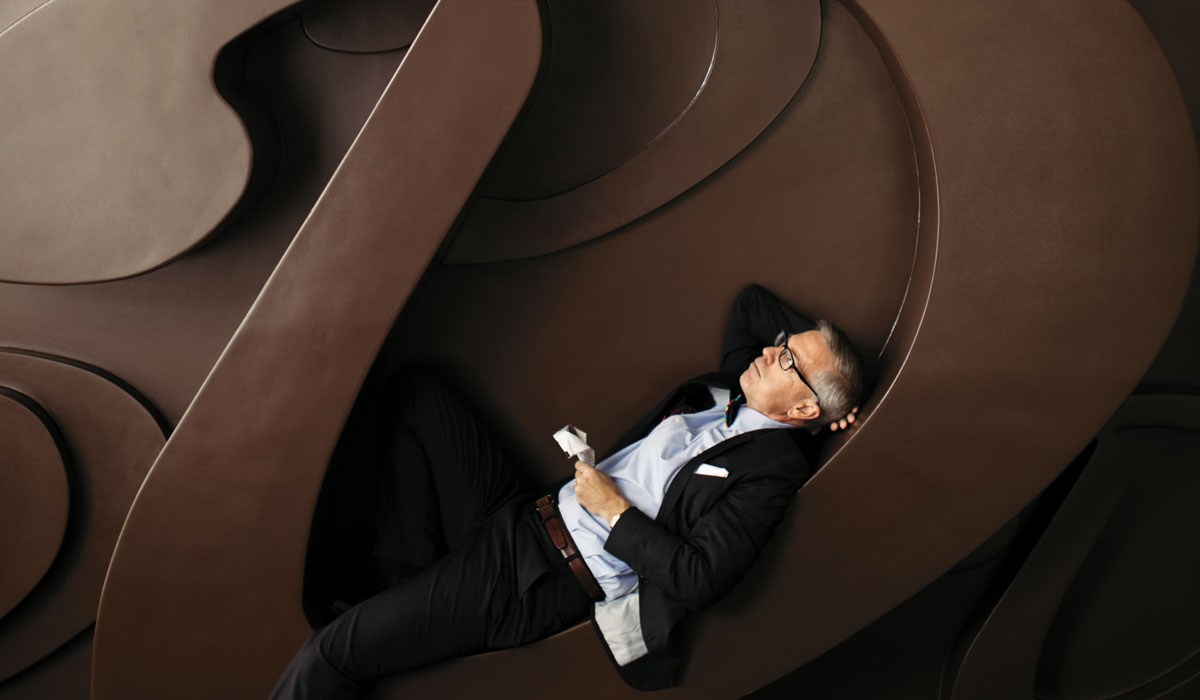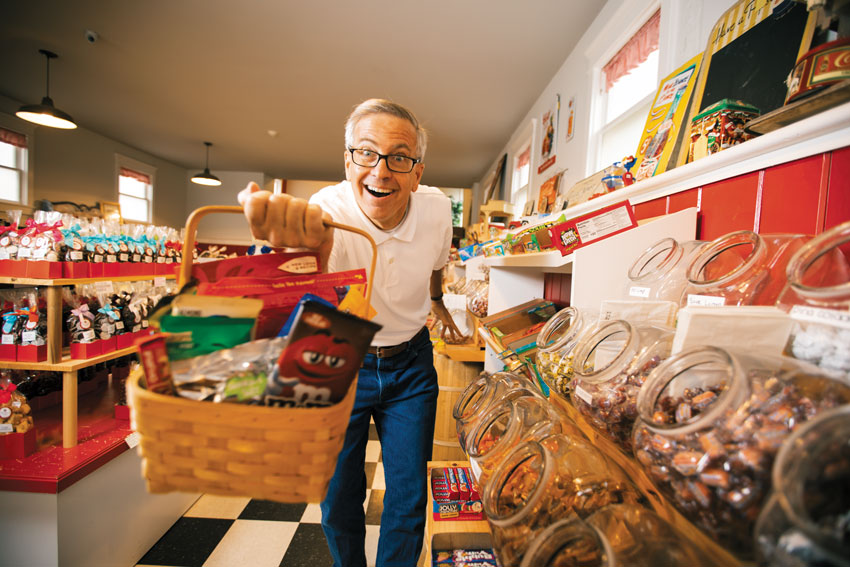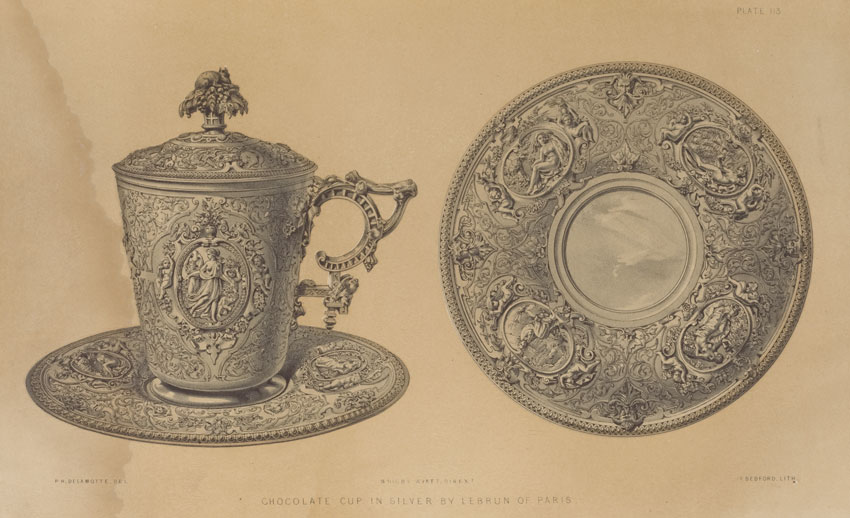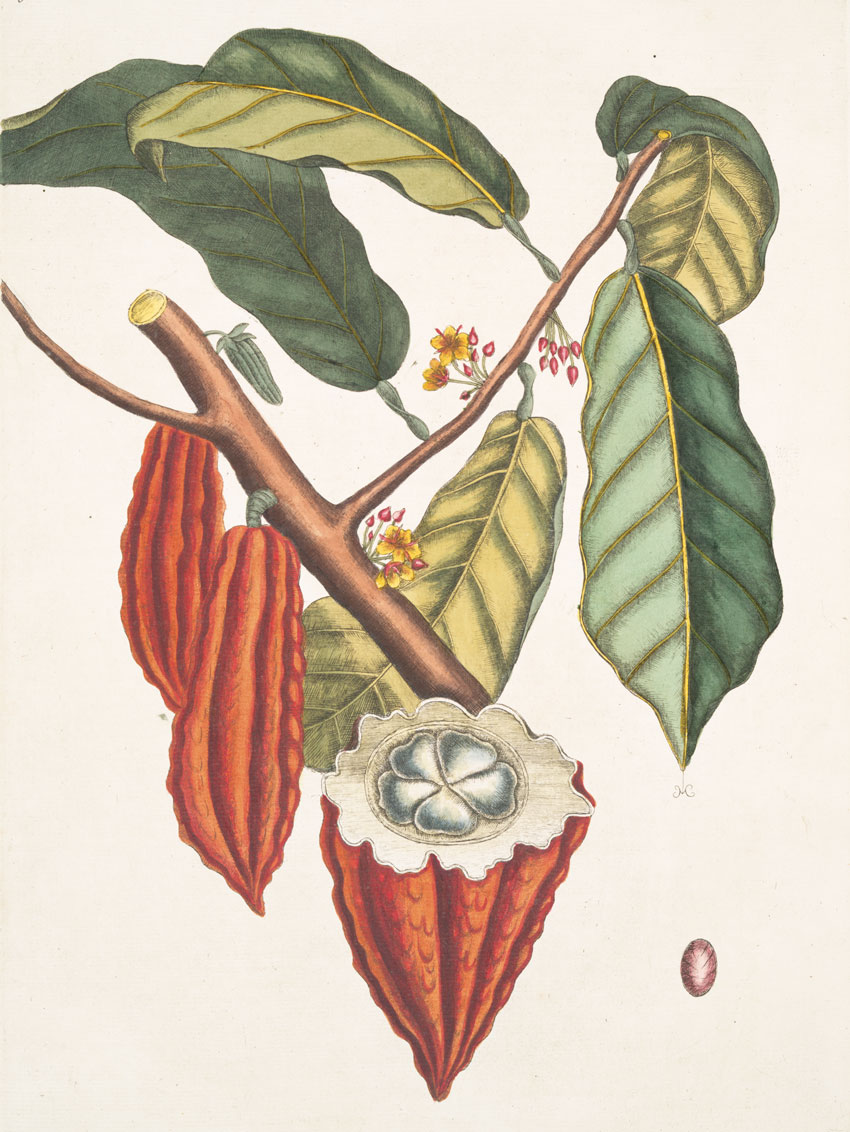
What makes a great story?
Or in the eyes of David Borghesani ’84, what makes a great chocolate story?
Pop culture would point to Charlie and the Chocolate Factory, the 1964 children’s book by Roald Dahl about a fantasy candy land, first brought to life on screen in 1971 by Gene Wilder’s portrayal of the factory’s whimsical Willy Wonka, and again by Johnny Depp in 2005.
Like Depp’s Wonka, Borghesani—who was born to a U.S. military family in Germany, where the original movie was filmed—grew up in a household outside of Philadelphia without candy, gum, or mints because his father was an oral surgeon.
This upbringing did little to deter Borghesani’s choice of career. In 2013, after three decades of wearing different hats at Mars Wrigley, he assumed the role of chocolate historian.
“In my world [growing up], candy was forbidden,” Borghesani said. “[At Mars Wrigley], I found myself in a place where I was encouraged to enjoy and share the joy that candy produces with people everywhere.”
Today, Borghesani helps articulate Mars Wrigley’s history—giving lectures at historical sites and museums worldwide, from Mount Vernon, Virginia, to Europe—and by educating others on chocolate’s evolution since its origins 3,500 years ago.
As described by Ed Grube ’84, his Lambda Chi Alpha fraternity brother, Borghesani naturally gets into character as an animated storyteller. If he weren’t the chocolate historian, “you might find him as a tour guide at the battlefield,” Grube said.
“Dave has perfected the art of telling a tale. Having a positive disposition, he could always command an audience or strike up a conversation. [The bowtie just] gives him the persona, the unique piece that ‘I’m a professor of chocolate history.’”
Borghesani’s charisma draws smiles from audiences everywhere, indeed, including every colleague at Mars Wrigley’s Hackettstown, New Jersey, headquarters—or so it seemed the day of Borghesani’s photo shoot, in which his donning of a makeshift bowtie fashioned from M&M’s® drew plenty of collegial jokes and passing comments. But it’s his innate enthusiasm for his “dream job,” as he first explained it to Grube, that is likely responsible for the positive reactions to his storytelling.

Following a brief stint as a sales representative for Proctor & Gamble, Borghesani first got a taste of the sweet life in 1986, when Mars recruited him to join its retail sales team. From 1989 to 1996, he transitioned throughout Mars as an account manager, a retail manager, and a national sales trainer, before moving to Hackettstown three years later to fill a variety of roles. In 2010, he served as the U.S. sales account planning manager, his final position before taking over for his predecessor as the chocolate historian.
“People knew I was a historian. I loved history and I loved research,” said Borghesani, who earned a bachelor’s degree in history from Gettysburg College.
One Gettysburg class in particular—and its paper on the American Revolution—set him on a path of distinction. It was led by Bruce Bugbee, a beloved American history professor who specialized in colonial and revolutionary America.
“See any typos? You better pull the paper out and start again,” said Borghesani, describing the hours spent researching and preparing his final report on his Smith Corona typewriter. Upon reading Borghesani’s paper, Bugbee suggested he submit it for publication. This encouragement “elevated” Borghesani’s belief that he was able to produce a well-researched product—a skill that still aids him today as a chocolate historian.
“Prof. Bugbee provided comments that truly changed where I was heading, not only as a student, but as a person,” said Borghesani. “[He made me] want to do more, to learn more, to pursue, to strive, to do things beyond what I have been doing all along in terms of growing and pursuing education.”

One of Borghesani’s ongoing charges as a storyteller is to promote AMERICAN HERITAGE® Chocolate, which was inspired by 18th century chocolate recipes. One year after its 2014 launch at M&M’s World store in New York City, the brand adopted a new tagline, “Savor the Stories,” to celebrate its deep interconnecting roots, just like a flourishing cocoa tree.
It was in 2006 that the idea of AMERICAN HERITAGE® Chocolate was born, based on Forrest E. Mars Jr.’s dream to tell the great story of chocolate—how its flavor, texture, and format transformed through the ages. Biting into a piece of AMERICAN HERITAGE® Chocolate is like traveling back to a time when chocolate was first enjoyed as a warm drink. It is the result of an ever-evolving recipe that combines sweet and spice, and everything nice, with hints of cinnamon, chili peppers, and more.
The current recipe’s inspiration can be found in Borghesani’s written research, including a free educators’ guide completed in partnership with National Geographic in 2018, entitled Great Moments in World History: Global Stories Where Chocolate Sparked Discovery, Innovation, and Imagination!
The story behind AMERICAN HERITAGE® Chocolate is also told through his travels for television appearances, educational presentations, and chocolate tastings. As the chocolate historian, Borghesani focuses on “edutainment,” a combination of education and entertainment that allows chocolate lovers to fully understand why they enjoy the sweet treat using all five senses.
“It stimulates your creativity,” Borghesani said. “People can get a true appreciation for the different types of chocolate.”
A true love of chocolate cannot thrive without an awareness of its history, Borghesani said; therefore, his work centers around the connection between people, places, and times. From President George Washington placing 50-pound orders from England for his morning beverage to Americans safeguarding chocolate while evacuating Fort Ticonderoga during the Revolutionary War, chocolate was cherished.

“Chocolate was more than special,” Borghesani said. “It was food, and they loved it. That’s something we forget in our world today. We look at things through our time and place. We need to look across time and place.”
At least once a month, Borghesani’s travels take him back to Gettysburg, home of Pennsylvania Hall, which served as a former Civil War hospital, where it is told a nurse by the name of Emily Bliss Thacher Souder tended to recovering troops with cups of chocolate.
“[It] really brings that connection to me and Gettysburg back, the fact that this is a hub of history,” Borghesani said. “It was a great place for me to learn. It’s special every time I come through here. It comes full circle.”
From majoring in history at Gettysburg College to becoming the chocolate historian for Mars Wrigley, that’s Borghesani’s great chocolate story.
See below for more on chocolate!
7 facts about chocolate
These facts are taken from Great Moments in World History: Global Stories Where Chocolate Sparked Discovery, Innovation, and Imagination!
- “Cacao” refers to the plant or beans. “Chocolate” refers to anything made or processed from the beans. “Cocoa” refers to chocolate in a powdered form.
- The word “chocolate” comes from the Aztec word “xocolatl” (sho-koh-LAH-tuhl), which means “bitter water.”
- Cacao trees are found in limited geographical zones: tropical areas within 20 degrees north and south of the equator.
- The first people known to consume cacao beans were the Olmecs, who lived in modern-day Southern Mexico. They were followed by the Mayans, Toltecs, and Aztecs, who used chocolate as currency, for religious rituals, and even medicine.
- Cacao beans were so valuable that ancient counterfeiters risked making fake beans. Archaeologists have found beans in which the cacao contents were removed and replaced with clay or wax.
- In an Aztec market, one cacao bean could buy a tomato. One hundred beans could buy a turkey. A copper ax cost 8,000 beans.
- One chocolate chip provides enough energy for an adult to walk 150 feet.

© Mars Wrigley Confectionary and National Geographic Partners, co-authors of Great Moments in World History: Global Stories Where Chocolate Sparked Discovery, Innovation, and Imagination!
Chocolate through the ages
1500 B.C.E. — The Olmecs may be the first to consume chocolate.
1502 C.E. — Christopher Columbus and his son, Ferdinand, visit Maya in present-day Honduras and bring back the first cacao beans to Europe.
1579 — English pirates burn and sink a Spanish ship filled with cacao beans after they mistakenly think the beans are sheep droppings.
1585 — The first commercial shipment of cacao beans arrives in Spain from the New World.
1635 — Spanish friars are the first Europeans to successfully cultivate cacao trees in Ecuador.
1641 — Chocolate first appears in North America, when a Spanish ship took refuge in St. Augustine, Florida, during a storm.
1650-1657 — Chocolate reaches England and chocolate houses, which are similar to coffee shops, open to the public.
1659 — The first French chocolate shop opens in Paris.
1670 — The first recorded sale of chocolate in the American colonies takes place in Boston.
1682 — Chocolate production begins in the American colonies, when the first shipment of cacao beans from Jamaica arrives in Boston.
1755 — Benjamin Franklin secures six pounds of chocolate for each office in General Braddock’s army in the French and Indian War.
1758 — George Washington places his first order for 20 pounds of chocolate from Britain.
1761 — Benjamin Franklin’s Poor Richard’s Almanack recommends chocolate for treating smallpox.
1777 — The Continental Congress imposes price controls on chocolate to keep it affordable for the military during the Revolutionary War.
1801 — Thomas Jefferson orders a silver copy made of an ancient Roman askos, later used by his family as a chocolate pot.
1804-1806 — Lewis and Clark explore the Louisiana Territory, using chocolate along the way for both food and medicine.
1862 — Chocolate is served at Abraham Lincoln’s Inaugural Ball.
1914 — Theodore Roosevelt explores the Brazilian wilderness, bringing chocolate as part of the expedition’s rations.
1923 — Mars introduces its first big hit, the Milky Way bar.
1935 — Amelia Earhart enjoys chocolate above the Pacific Ocean on her historic flight from Hawaii to California.
1937 — The Logan Bar, or D ration bar, is developed as an emergency ration for the U.S. military.
1940 — Forrest Mars Sr. of Mars, Incorporated, develops M&M’s with the help of R. Bruce Murrie, of Hershey heritage.
1961 — Russian cosmonaut Yuri Gagarin becomes the first person to eat chocolate sauce in space.
1981 — M&M’s are eaten aboard the first space shuttle mission.
1988 — M&M’s become part of the “meals ready to eat” military rations.
Timeline adapted from: Great Moments in World History: Global Stories Where Chocolate Sparked Discovery, Innovation, and Imagination!
By Megan Miller
Posted: 10/01/19